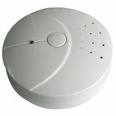Keeping Tenants Safe from Carbon Monoxide
 Every year, carbon monoxide poisoning kills 500 people.* Most could have been saved with a properly working carbon monoxide detector. If you are a landlord, your state may require carbon monoxide detectors to be installed and maintained in your rental units. But keeping your tenants safe is the right thing to do, whether or not you are required by law to install detectors.
Every year, carbon monoxide poisoning kills 500 people.* Most could have been saved with a properly working carbon monoxide detector. If you are a landlord, your state may require carbon monoxide detectors to be installed and maintained in your rental units. But keeping your tenants safe is the right thing to do, whether or not you are required by law to install detectors.
What is carbon monoxide? Carbon monoxide (CO) is a toxic gas produced by incomplete combustion of fossil fuels: oil, natural gas, wood, coal, and gasoline. In homes, the major sources of CO are fossil fuel burning furnaces, boilers, water heaters and fireplaces.
How can you detect carbon monoxide? This is the problem. You can’t. Carbon monoxide is odorless and tasteless. It is colorless, and unlike other dangerous emissions, CO does not irritate the skin, eyes, or nose.
Is carbon monoxide dangerous? Yes! It is highly toxic, and CO poisoning can be fatal.
What are the warning signs of CO poisoning? Headaches, dizziness, tiredness, and nausea. These symptoms are often mistaken for the flu.
What should one do if CO poisoning is suspected? Open all windows, call the Fire Department and remove all people and animals from the home.
What precautions should a landlord take?
1. Have furnaces, fireplaces, chimneys, and venting systems inspected annually.
2. Properly install and periodically inspect CO detectors. All detectors have test buttons.
3. Replace batteries in battery-powered detectors. twice a year—when clocks are changed for daylight savings time.
4. Regularly check all gas-fired appliances for leaks.
5. Instruct your tenants to notify you immediately if they detect any odors that indicate leaks.
6. Never allow tenants to use the range or oven for heat or to cook with charcoal grills inside the home or garage.
7. Never paint over detectors.
8. Replace detectors when recommended by the manufacturer. Keep instruction manuals and record the date purchased and installed. Record replacement dates in your annual inspection/maintenance logs.
 What types of carbon monoxide detectors are available? Some detectors run on batteries, allowing them to be placed wherever needed. Others are hard-wired with battery backups, and the third type plug into power outlets. Some have talking alarms, while others have digital displays.
What types of carbon monoxide detectors are available? Some detectors run on batteries, allowing them to be placed wherever needed. Others are hard-wired with battery backups, and the third type plug into power outlets. Some have talking alarms, while others have digital displays.
Where are CO detectors installed? CO detectors should be placed five feet or more above the floor, because CO is lighter than air. They may go on the ceiling, as well. CO detectors should not be installed near a fireplace or gas-fired appliance, such as a water heater. Each floor should have at least one CO detector, ideally near sleeping areas.
Landlords are responsible for keeping their rental units habitable and safe. One easy way to do so, which may be required in your state, is to install and properly maintain carbon monoxide detectors in all your rental properties!
*Source: Journal of the American Medical Association, Vol. 299, No. 9.

Add A Comment
You must be logged in to post a comment.